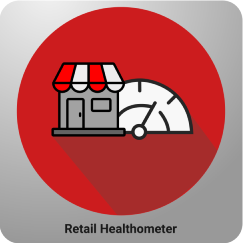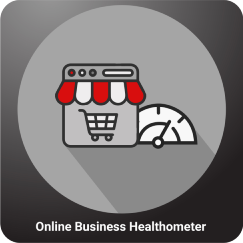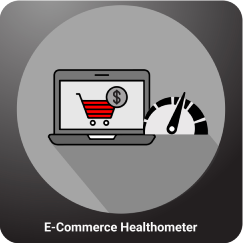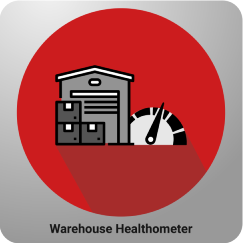What is this BIG DATA? “BIG DATA”, in simple terms, involves a collection of several brontobytes of digital data. The basic idea behind the phrase ‘Big Data’ is that every activity you perform leaves a digital trace/ data. From the dawn of civilization until 2003, humankind generated five exabytes of data. Now we produce five exabytes every two days and the pace is accelerating. (1). Big data eCommerce is entering the retail sector in a big manner.
Let us focus on the eternal question harnessing the minds of every retail organization – “WILL IT HELP INCREASE MY SALES?” The Big Data consulting companies know the answer.
Where does this “BIG DATA” generate from? We shall first focus on “ACTIVITY DATA”, which involves collection of data from various activities that we perform, right from watching music and videos on YouTube to shopping for a particular product from a particular mall, to searching a specific product online and comparing its prices, to reading various e-books online and zillions of such activities that we have been performing. To illustrate, a car dealer has a constant eye on all the users comparing features of several cars on the car information websites. Similarly, a wedding couture would be targeting people logging on to and hovering over wedding wear/wedding planner websites very often.
Next is the “CONVERSATION DATA”. As the name suggests, it is derived from the numerous digital conversations initiated and followed by you. We converse on Facebook, Twitter, LinkedIn, Instagram, Emails, Messages, Skype, Blog and so much more. Facebook has the data of nearly 1.44 million active users(2) which they have efficiently categorized into age-specific, gender-specific, profession-specific, area-specific, interest specific and several such groups. For a construction company, who is coming up with a flat scheme close to the IT Park, can bank on data of users working in IT Companies close to that particular area. For a luxury brand, coming up with a new edition of laptop bags for women can target data of all those professional women between the age group of 25 to 40, who have liked “Luxury Brands” Pages, living in specific areas where they are launching the product.
Conversation Data can be in the form of text, images or videos. All the internet-connected citizens share over 1.8 billion photos each day (3). The data generated through photos and videos is massive and this BIG DATA is eventually used by companies to share their happy customers’ testimonials, loyalty card benefits and several such customer-centric programs.
Another such data collection source is through “SENSORS”. Your smartphone contains a global positioning sensor to track exactly where you are every second of the day; it includes an accelerometer to track the speed and direction at which you are travelling. We are surrounded by innumerable devices which have sensors inbuilt and can monitor our movements and track your preferences. We now have smart TVs that are able to collect and process data. We have smart watches, smart fridges, and smart alarms. The internet connects these devices so that the traffic sensors on the road send data to your alarm clock which will wake you up earlier than planned because a blocked road means you have to leave earlier to make up your 9 am meeting.
The value of “BIG DATA” depends on the volume, velocity, variety and most importantly the veracity of the data. The accuracy determines the utility of the data.
By conducting Big Data analytics in eCommerce one can gain a better understanding of the customer needs. Through the churning of several data collection sources, a telecom company devised a variety of Mobile Plans serving the needs of consumers from various segments. A High Data plan for a college student V/S a Low National and International Calling Plans for a Businessman. An FMCG Company introduced a marketing campaign of a low-fat snack for women during the wedding season. Considering the data analytics that men comprised of more than 40% users of fairness face wash, a cosmetic company introduced fairness face wash and cream especially targeting the men.
It also understands and optimizes business processes. Retailers are able to optimize their stock based on predictive models generated from social media data, web search trends and weather forecasts. One such excellent example is “Angry Bird”, which has penetrated from just being a game to the lives of the users thereby promoting sales of its goodies like bags, bottles, pouches, T-shirts. Another example is supply chain or delivery route optimization using data from geographic positioning sensors (GPS).
Using big data in the retail industry helps us to connect to our customers in the way they like (Social Media/ Text/ Emails), at the right location (when they are close to our store) engaging them with personalized real-time offers. For an 18-year-old who enters our store, a quick pop-up saying “Flat 15% off on your favourite Maybelline Kajal”, will surely bring joy to her face. Real-time analytics also help us in determining the customer demand, competitor activities, Inventory levels and our best price.
The target of Big Data has always been moving upwards and is directly proportional to the optimum use of technology by the users. The applications of Big Data are endless! Currently, we are only seeing the beginnings of a transformation into a big data economy. Any business that doesn’t seriously consider the implications of Big Data runs the risk of being left behind. Focus for the “E-Era” must be BIG DATA, BETTER EXPERIENCE, BIG BUYING!!
To know more about how you can create a competitive edge with Big Data in your business, get in touch with YRC Business Experts.
YRC Related Articles: How to Write SOPs for Marketing?, 6 Ways To Grow Your Business, How to Start a Retail Business in India, Business Expansion Plan for Small Entrepreneurs, Six Steps to Writing a Great SOP for Retail, How to write SOPs for an Apparel Brand?, How to Develop SOPs for Quick Service Restaurant?, How to write SOPs for Furniture Showroom
Author Bio











